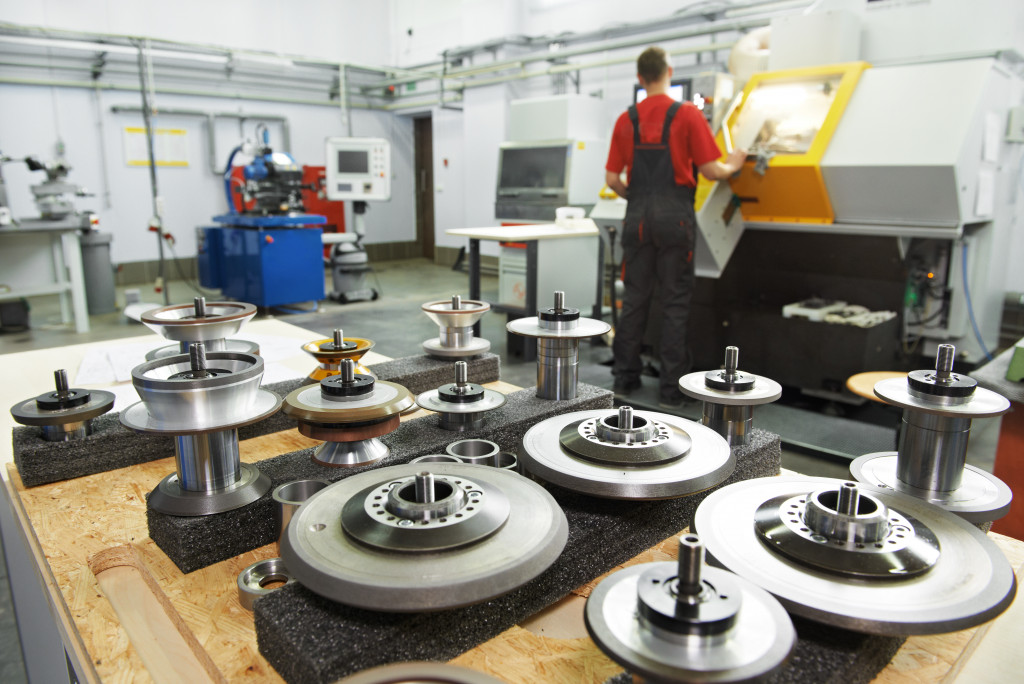In any manufacturing environment, there are health and safety risks that need to be eliminated for employees to work safely. These risks are often associated with noise, glues, and chemicals.
Every manufacturer’s responsibility is to maintain a great working environment for their employees. The following are different ways that manufacturers can maintain this environment, thereby protecting the health of their employees.

Noise Pollution
Noise is one of the most common hazards in manufacturing facilities. It can include loud equipment, other employees working hard through the day or anything that causes an employee to raise their voice while speaking.
Exposure to consistent noise for extended periods can cause damage to employees’ hearing and has even been linked to heart disease. Manufacturers should consider the noise levels of their facilities to ensure that employees are not exposed to dangerous sounds.
Additionally, manufacturers should use ear protection when operating loud equipment and encourage all workers to do the same. Recommending earplugs for crew members is a great way to help protect them from harmful noises.
Chemical Spillages
Ensuring the safety of chemical spills is very important in any manufacturing facility. Chemicals can cause severe burns and even blindness if not used correctly and safely.
Employers should ensure that proper training on handling chemical spillages is given to all employees before they work with chemicals or even before workers start their jobs. Formal training will ensure that employees are working safely and maintain a healthy working environment.
Additionally, it is crucial to have proper safety equipment on hand in the case of chemical spillages, including protective aprons and fire extinguishers. Chemicals should be kept in their specific areas with cabinets and locks to keep chemicals secure and limit the chances of a spill.
Gas Exposure
Manufacturing facilities often have equipment that can release gas, which can harm employees. Manufacturers should inform workers of any machines that could emit gas into the air and provide them with proper protection.
Companies should ensure that their workers are not exposed to gases for extended periods, likely to cause long-term health problems. Mainly, radon gas has been linked to lung cancer. Employers should ensure that they perform regular radon mitigation in their facilities and eliminate any harmful gas sources in their facilities.
Human Error
Humans are not machines; they make errors. It is one of the most common causes of accidents in manufacturing facilities. Employers can eliminate human error by installing security systems in their facilities that shut down equipment when workers do something dangerous or unapproved.
Additionally, manufacturers need to encourage open communication among all employees so that they can speak up about it if there is a problem or an accident occurs. Doing so will allow the company to learn from those mistakes and stop them from happening again in the future.
Heat Stress
Employees must be aware of heat stress as an occupational hazard in the workplace. Heat stress occurs when environmental temperatures are too high, and a worker’s body cannot cool down. If not treated, it can cause severe damage to the brain, heart, and muscles.
You can prevent heat stress by taking breaks, drinking plenty of water, and staying in air conditioning as much as possible. Employees should not wear heavy clothing, which will trap hot air close to their bodies.
Food Contamination
Food contamination is a serious occupational hazard that can cause illness or death.
To prevent food contamination, manufacturers should ensure that the food they handle is handled safely before it reaches employees’ hands. Manufacturers should take precautions such as keeping hot foods hot and cold foods cold with the appropriate equipment and using clean surfaces for food preparation.
Additionally, manufacturers should thoroughly wash their hands before handling food or after using the bathroom in order to minimize bacteria that you could transfer to the food.
Slips and Falls
Manufacturers must take precautions for employees who may slip and fall in some regions of their facilities. Employers should ensure that floors are properly maintained to not slippery. They should also be aware of any uneven surfaces that could cause workers to lose balance.
Employers can prevent falls by providing proper footwear for employees and training them on how to maintain their footwear correctly.
Manufacturers should also keep walkways free of the clutter that could obstruct an employee’s path or trip them up.
As you can see, there are many potential hazards that workers can face in a manufacturing facility. However, employers can keep their workers safe and healthy by being aware of these hazards and taking the appropriate precautions.









